More Love
Audrey Schmidt
Recent VCA sculpture graduates Josh Krum and Aden Miller didn’t know the walls of the small external laundry of their Carlton North sharehouse were lined with asbestos when they decided to turn it into a gallery space and name it Asbestos. It was pure serendipity. They shared an earlier music project by the same name and so decided to continue the legacy well before they began sanding back the walls and inhaling the toxic airborne particles. The word asbestos conjures a sense of foreboding as a curse that lies dormant for at least ten years after exposure. This sense of dread also looms in the gallery’s logo: a lower-case “a” with a fractured crater in its centre. After holding eight exhibitions at their previous Carlton location, the gallerists have relocated to a larger shed at the rear of a Brunswick sharehouse, added Britt D’Argaville to the directorial lease agreement and updated their logo (the typeface is now like ink bleeding through a well-used stamp). The scale and layout of the new shed is almost indistinguishable from Guzzler—where Krum and Miller have exhibited before—sans dirt floor.
Asbestos is now asbestos-free. But that particular sense of dread lingers in this inaugural Brunswick exhibition, More Love. What looks like an old copper laundry boiler cased in concrete occupies valuable floor space in the corner of the converted shed. Boarded up with unsecured wooden slats, it takes on the appearance of the haunted well in Ringu (1998)—the grave/home of the vengeful Sadako as seen on the cursed video tape. Sitting on top of the ghostly well structure is Mike Kelley’s unauthorised inclusion—his collaboration with the Australian label Perks And Mini (P.A.M.), Little Friend (2007), courtesy of an anonymous collector. The googly-eyed, hairy blue plush toy sits with his box behind him, little pink felt hands outstretched as though waiting for a hug.
When you shake Little Friend, he spews out twenty different phrases in demonic tones: “Noooo no! Please stop… No NOO!”; “Don’t touch me!”; “Pleeeaaase… Don’t abandon me…” The front of the box reads “I watch you … all the time”. Beyond Little Friend’s clear nod to possessed children’s toys, Chucky, Annabelle, Slappy etc., shaking the child-like toy implies violence. As Little Friend’s loose pupils rattle around its plastic eyeballs and plead you to stop, you feel uncomfortably guilty. It’s like a dark reinterpretation of Shaken Baby Syndrome, where parents hysterically shake their babies to death or damage, struggling to cope under the weight of new-parent responsibility. Or the overwhelming urge to squeeze or pinch “cute” things (also labelled “cute aggression”), which is the brain’s way of tempering the overwhelming onslaught of positive feelings. Here the “more” of More Love is a violent surplus. It is too much.
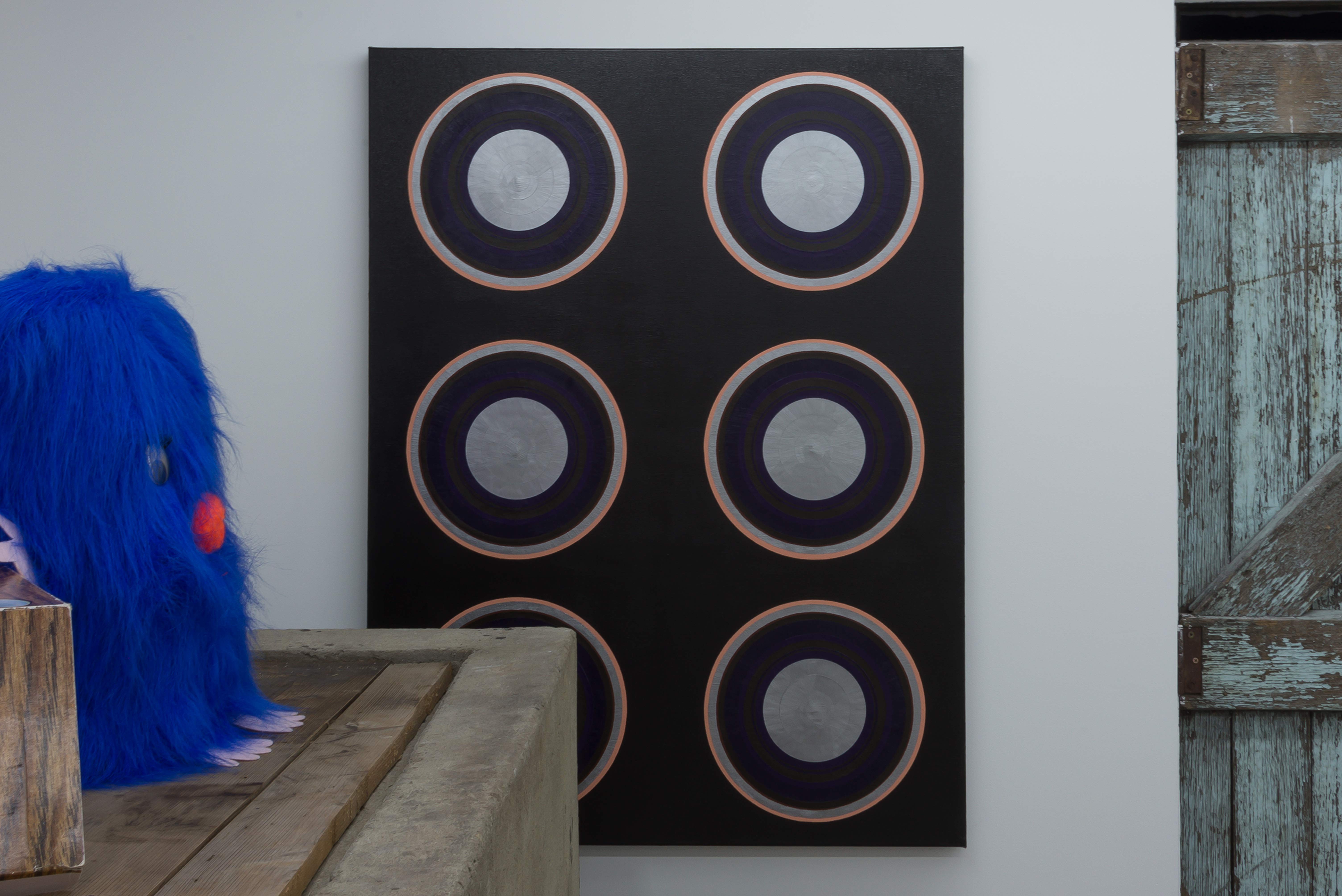
In supernatural thriller/violent surplus mode, another horror comes to mind when I encounter all twelve works crowded into the space. Horror vacui. No void goes unfilled here. Nestled in the small gap between the old boiler and the wall is Nik Lee’s painting, Untitled (2021). It suffers a bit in this position, partially obscured by the concrete structure, but I recognise it from Lee’s solo show at Bossy’s Gallery in December last year, Casino. The impersonal acrylic painting is of six circles consisting of other concentric circles. Their simple forms emphasise their democratic functionality; psychedelia designed for everyone like mid-century modern wallpaper. It recalls hotel-art with its “international” blandness and dehistoricised modernity. Apropos Bossy’s Gallery, I understand this work to be inspired by the casino game roulette. Like hallucinogenic casino carpets designed to keep gamblers awake, the circles are almost hypnotic. And, when wedged beside the abandoned “well”, the Ringu connection feels more credible.
In the centre of the gallery is Adam Martin’s work, We Do Miracles (2022). The New York-based artist has created an interactive video game that is presented on a monitor sitting on a dour desk and chair setup. It gives the whole space the vibe of a cluttered basement or teenage bong den. Despite its “chose your own adventure” ruse, the story unfolds in a deterministic way. Each click guides you on a one-way street through to the next scene. The start of the game sees a hooded Grim Reaper figure in a crest-like shield with the name of the work in classic gaming font. As the story evolves, slideshow images of abandoned malls are presented alongside the pixelated faces of teens with circa 2010 style. Although no clear linear narrative emerges, one intersecting storyline develops of a Grindr hookup in a married man’s family basement. Watching this unfold is tense, primed by the cinematic horrors of films like Gregg Araki’s Mysterious Skin (2004). You’re waiting for a violent sexual encounter that never happens as you instead find yourself clicking through to some seemingly unrelated comical encounter in early web aesthetics. But the non-sequiturs themselves build a sense of anxiety, swelling to abrupt ends with unresolved conclusions.
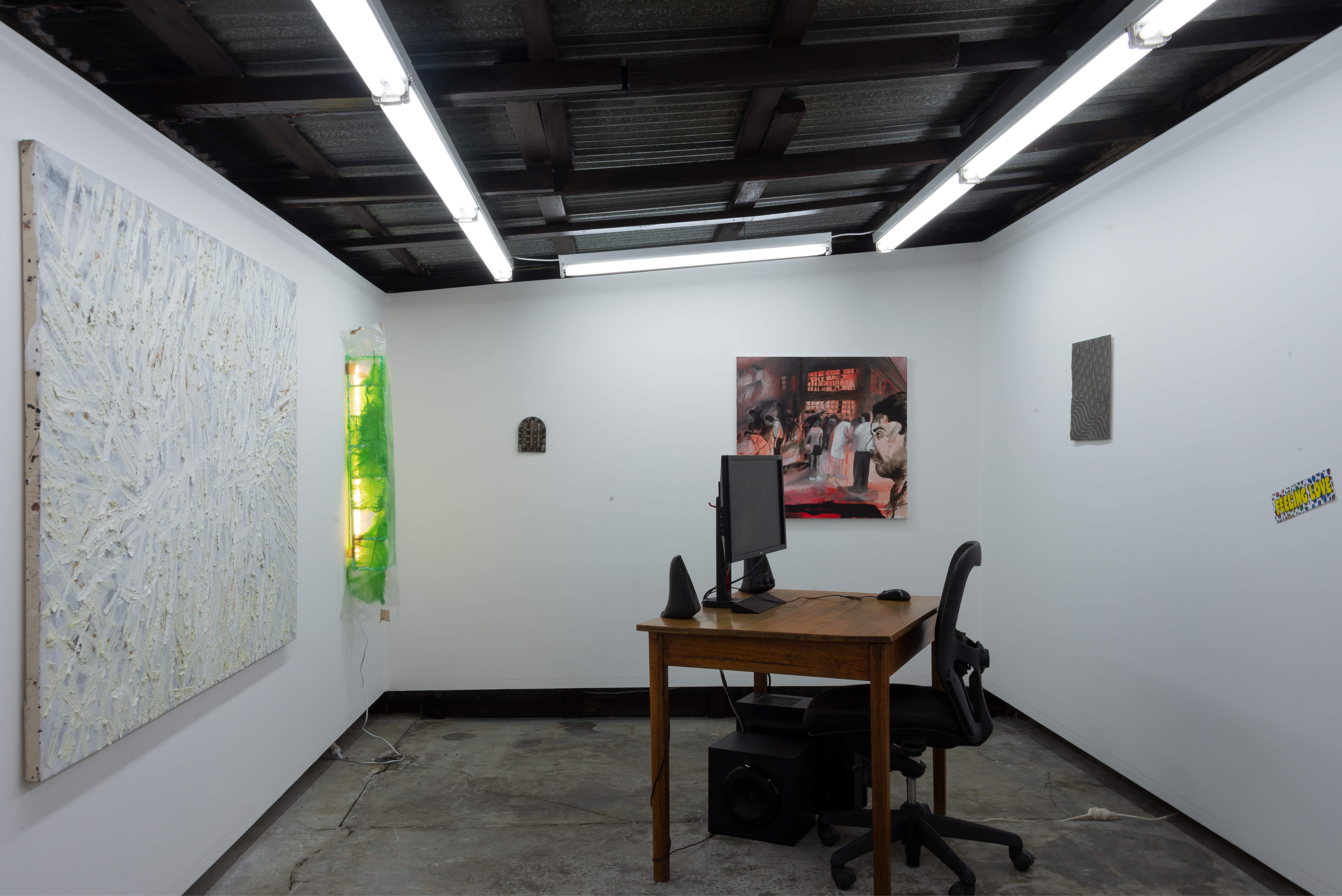
In Morag Keil’s solo exhibition at Guzzler in April, Videos, one work, entitled Dizzy (2019), was also set in a dead mall. Keil’s jarring jump cuts and absurdist compositions also ruminate on themes of surveillance, motion as metaphor, video game-esque online performativity and self-exploitation, the ooze of the virtual into the real. At her 2019 exhibition at the Institute of Contemporary Arts in London, Moarg Kiel, the installation for her Potpourri (2013) video work was actually presented in much the same way as We Do Miracles: full home-PC desk setup, swivel chair, desktop speakers. When this work appeared at Guzzler, however, it was on a TV mounted to the wall, leaving the gallery’s floor vacant. Although comparable in size, the Guzzler show felt consequently less overcrowded than Asbestos. Say what you will about Guzzler, but they know how much shit to put in a shed.
Horror films about VR and gaming like Brainscan (1994) and Ready Player One (2018) don’t feel as relevant to We Do Miracles as screenlife films (where all the movie’s events occur on computer, tablet or smartphone screens). The reason these films are also generally supernatural thriller or horror films (see: The Collingswood Story (2002), Unfriended (2014), Host (2020) etc.) is because they harness or mediate the anxieties surrounding the processuality of images. Likewise “post-screen”, Sadako’s curse in Ringu is born when she imprinted images of her violent death and her own rage onto a VHS tape kept in a cabin above the well using nensha (or the ability to parapsychically “burn” images onto surfaces such as film). Sadako’s otherworldly crawl out from behind the television screen to murder her victims is succinctly aligned with the central fear of the post-screen, which lies in the imperceptibility and instability of screen boundaries.
When seated at the We Do Miracles desk, Anabel Robinson’s canvas protrudes from behind the screen. On its textured surface, clumps of latex and beeswax peer through the erratic white brushstrokes. In her exhibition at Meow2 last month, Robinson included three large canvases made from the same materials and called the exhibition Racoon penis bone necklace—an object considered a totem of love or luck in the folk magic of the American South. Her partner and gallery co-director, Hana Earles, wrote the exhibition text and it too reads like a love letter. Given this heartwarming PDA, it seems likely that it is just one critic’s out-of-love damage causing a first response of terror. The horror of unstable, shared boundaries is at the forefront of my mind when I discover the title of the Asbestos painting is Wet Hair. Is it too much of a stretch to see beeswax eyes surveilling the scene through thick soggy strands of hair, bleached white in fear?
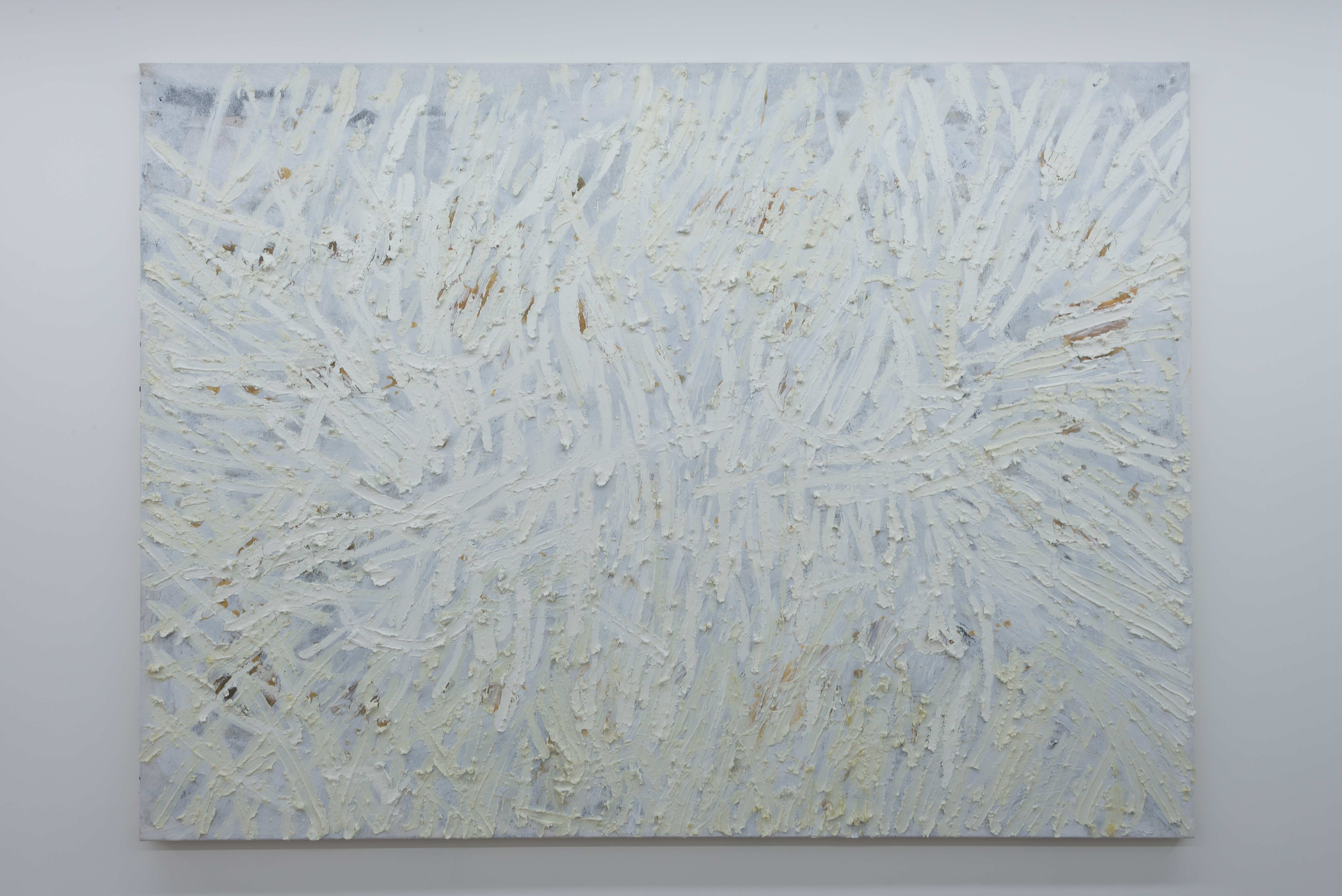
In post-screen films the slippage between diegesis and medium constitutes the horror—one that is channelled through the moving image but is also, in part, a fear of these media. Ringu is explicit in portraying the temporal immediacy and subjectivity of TV and video spectatorship as a menacing force that threatens to infect the family home (and particularly a parent’s ability to protect children from harmful images). The phone call that victims receive after viewing the murderous VHS clearly positions it as just one technology in a chain of dangerous communication devices. Particularly because Ringu was released at a moment when VHS was becoming obsolete, this blurring of boundaries is less medium-specific and more an invocation of the ways that public/private divisions have been, and continue to be, redefined by technology. Coupled with the psychological thrill of being cognitively unmoored from temporal consciousness and assaulted with stimuli that exceed normal perceptual capacities, in many ways it is a natural progression from Lumiere’s The Arrival of a Train at La Ciotat (1896).
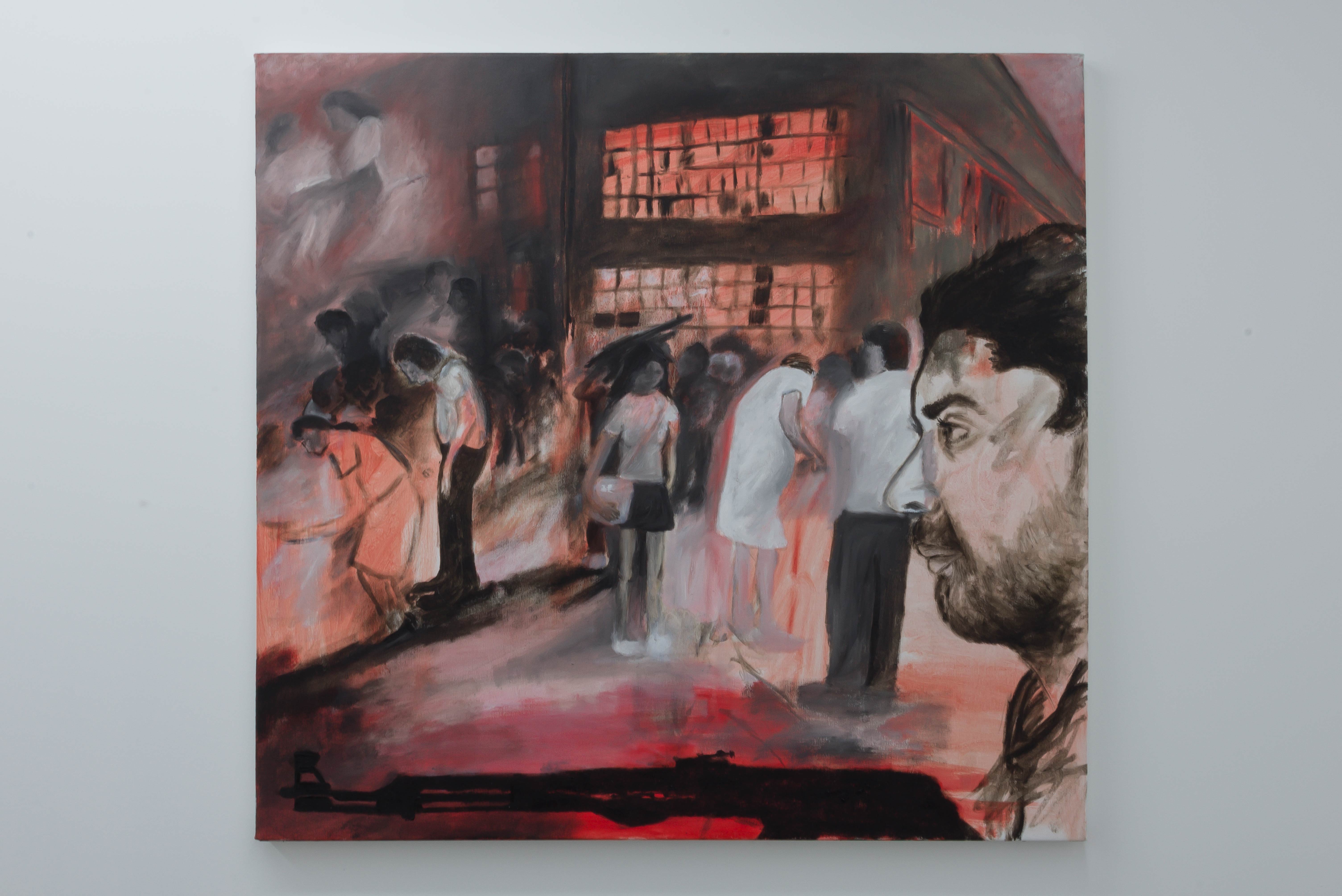
Lei Lei Kung’s dreamscape oil painting hints at this psycho-temporal slippage too. Titled Exile Dream (General: They ask for kindness, I keep my gun in my baby blue Courreges… we look for escape, one world to the next), the painting depicts a dream where the burning wartime city of Melbourne is evacuated. The profile of a man holding a gun, pointed at some unknown (off-screen) soldier or civilian, is foregrounded against the chaotic backdrop of a city in flames. Next to it, Jasper Jordan-Lang’s work WAP(2) - 06(3) looks as though it was a relic found in the aftermath of Kung’s apocalyptic warzone. Like much of Jordan-Lang’s work, the concrete-grey relief presents as a future archaeological discovery of a City of Melbourne infrastructural design. Its neat symmetrical water droplets and “waves” have the urban utilitarianism of council signage but it is displaced as a speculative artefact that confuses past, present and future. As the title of Kung’s work suggests, these works trade in the same sense of dread that permeates More Love: the psychotropic fluidity of boundaries between worlds, dimensionalities and states of consciousness.
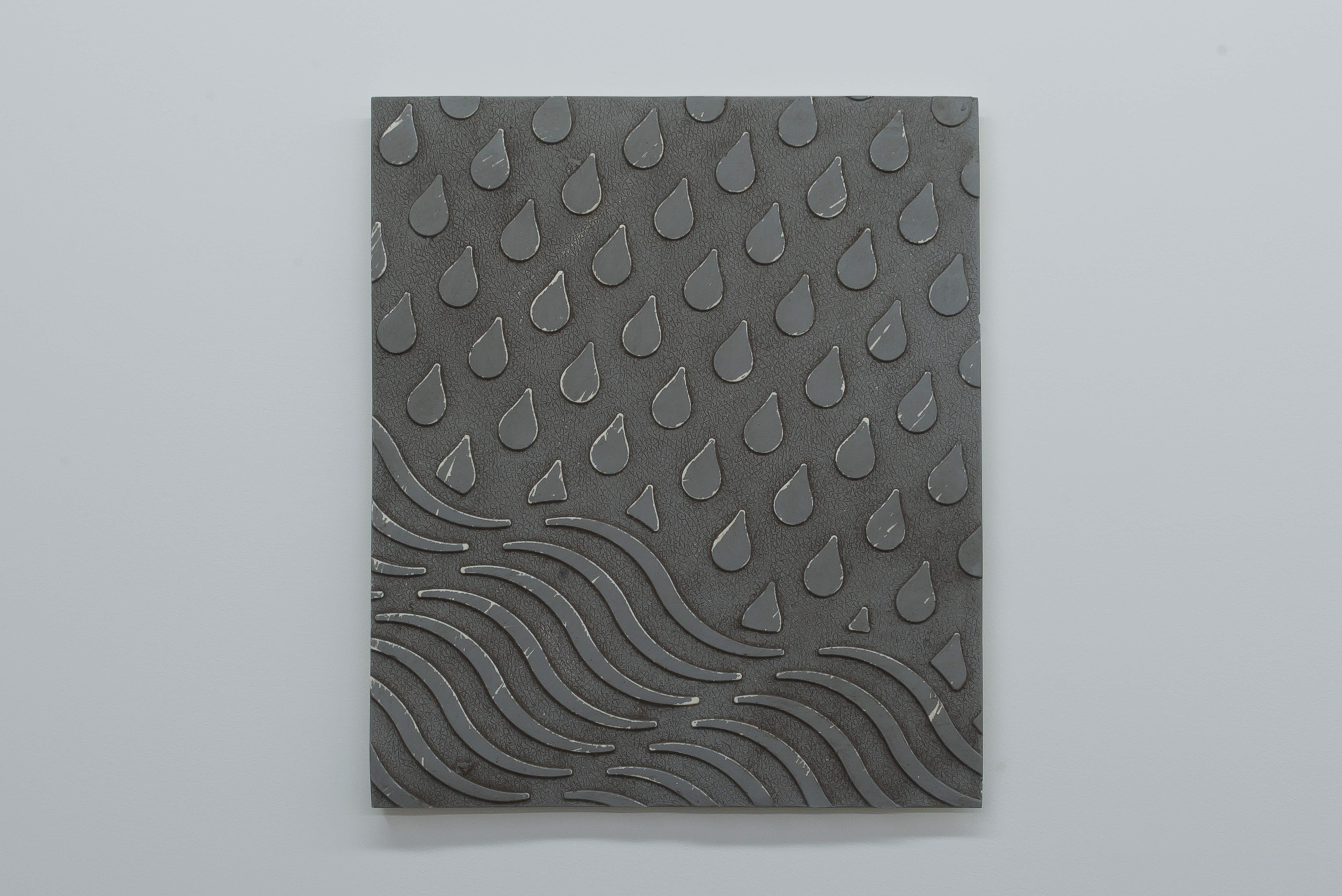
The other unauthorised inclusion is from Jordan Wolfson (another anonymous courtesy). It is a bumper sticker that reads “Feeling Love”, which the artist was rumoured to have sent to anyone who messaged him online circa 2019. A tongue-in-cheek manifestation of the “like”, once again breaking that fourth wall. The word “screen” connotes a barrier or partition—an object placed in-between to protect or separate. It covers and protects and yet allows us a glimpse of what is projected from behind. It can protect the user-in-hiding from, say, criticism, but it is also a gateway or interdimensional portal. Xavier Vasco’s wall construction, Speakeasy (2022), could be the materialisation of one such portal. Vasco’s work is a Mediaeval grill that one might expect to find on the arched dungeon window of a Gothic fantasy game. Instead of allowing a glimpse to the other side, though, behind the grid is more opaque wood. The name suggests a prohibition-era hideaway, but nothing lies beyond this entrance (or exit). Beyond the portal is nothingness, void.
Spencer Lai’s Untitled works encapsulate horror vacui in terms of its alternative translation as the fear of minimalism. The rectangular balsa wood structures cased in plastic sheeting over LED lights are a play on minimal forms, but “sullied” (as written in the exhibition text for their first Bossy’s Gallery appearance) by frivolous craft objects such as brightly coloured ostrich feathers, beads, gold leaf and torn newspaper. The first of these works sits adjacent to Alexis Kanatsios’ work, Protect from Harm (2022), which feels “properly” minimal and sleek. A likewise wooden structure with cotton pulled tight over it like a canvas. It has the effect of an architectural boating appendage such as a sail, hinged at the wall to sit slightly out from it, implying movement but remaining ultimately rigid. Like Speakeasy and Martin’s phoney “choose-your-own-adventure”—it is simply the illusion of movement, choice, hidden depths.
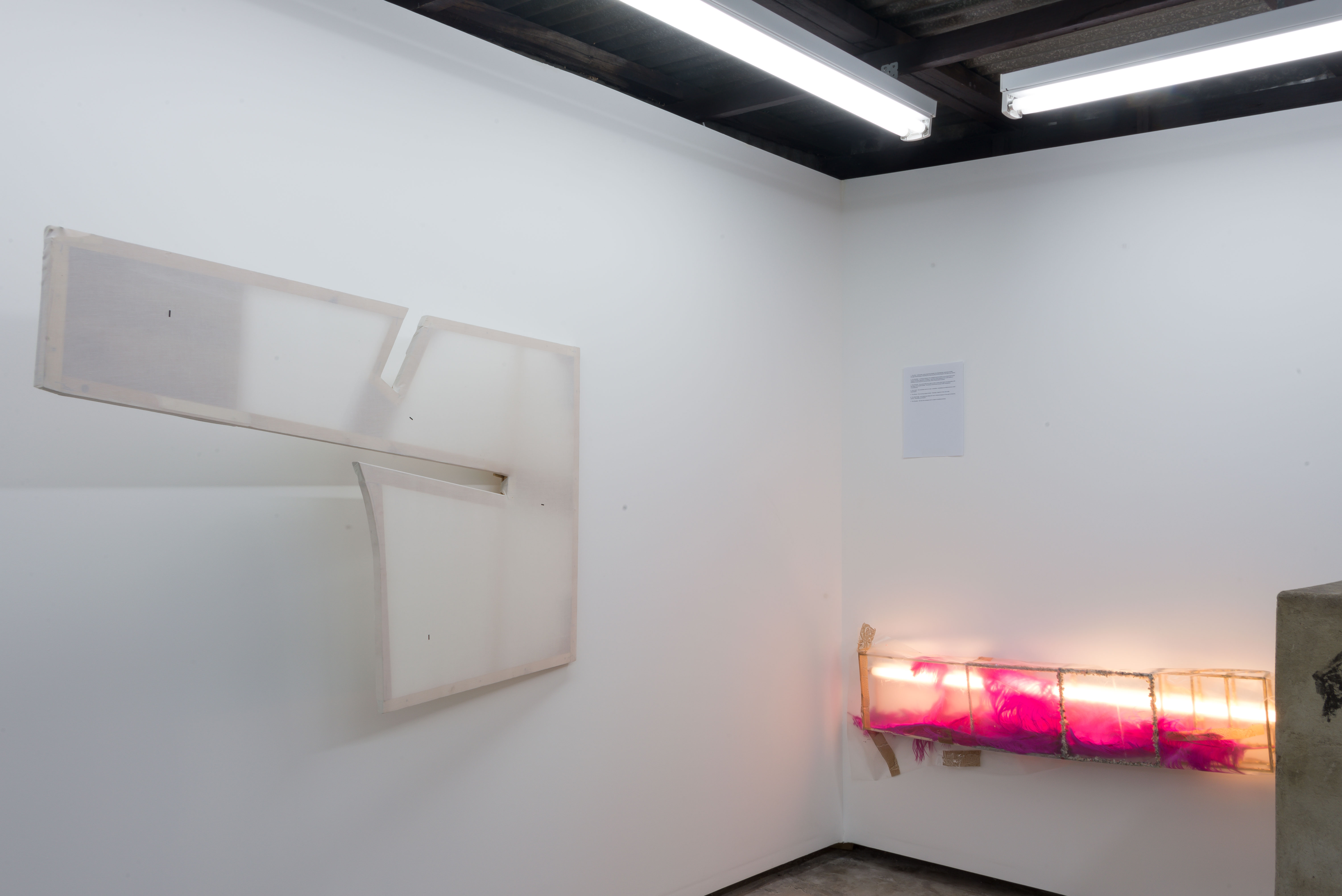
Somewhere between these was a printed A4 piece of paper with a numbered list 1-7 by Eric Schmid, a Deleuzian mathematics-philosopher and non-music musician based in Chicago who was presented at Meow2 with Matt Voor in November last year. I don’t know where or how this guy has popped up but I’m assuming they all met on some hyperniche corner of Twitter. After digging around, it appears he’s a global house-show fixture with previous bylines at galleries such as Brooklyn-based Triest (directed by Matt Voor). His list is of animal-human sociolinguistic associations including “The Rat - a terminally online basement dweller that ideologically outsmarts sociality through indoctrinating a following into believing they are the emperor (but with new clothes)” and “The Leech - the scenester who is a user, a parasite, completely pre-determined by social machination”. The Rat is ostensibly well situated in this exhibition with We Do Miracles, but Schmid’s main thing seems to be manifestos about “Manhattan” drama I’m not privy to. So perhaps the list could be considered more of a bonding agent for the “leaky distinction” between New York and Melbourne scene politics? Can one of my forty friends currently on artist vacay in NYC let me know? Socialite Matthew Linde declined to comment.
The idea of “healthy boundaries” often crops up when it comes to love relationships. Yet the title of this exhibition is presumably a reference to Kelley’s 1987 work More Love Hours Than Can Ever Be Repaid. This work is an assemblage of thrifted handmade dolls and crochets amassed to form a blanket-like wall hanging. Here the abandoned toys represent orphaned affection, they have too much love to give. Their love spills over the outer limit of human reciprocation and yet they seem to say (to deaf ears), as Juliet said to Romeo, “the more I give, the more I have”. Love as the endless Shakespearean sea where one can never love enough constitutes an essential lack. It is the strange confluence of these ideas in a crowded inventory of nightmares that make More Love, with its many excesses, feel disturbingly empty.
In house-shows, the domestic bleeds through and infuses the space with new confines, signifiers and ambience. The boarded-up copper laundry of the new Asbestos impacts the works, as does the little piece of suburbia attached to it. Like nensha, its surrounds burn surplus images onto the gallery walls. With Meow2 threatening to move to Berlin and Guzzler rumoured to be on their way out, it’s good to know the model perseveres. Afterall, the only way to survive Sadako’s curse is to copy the tape and pass it on to someone else.
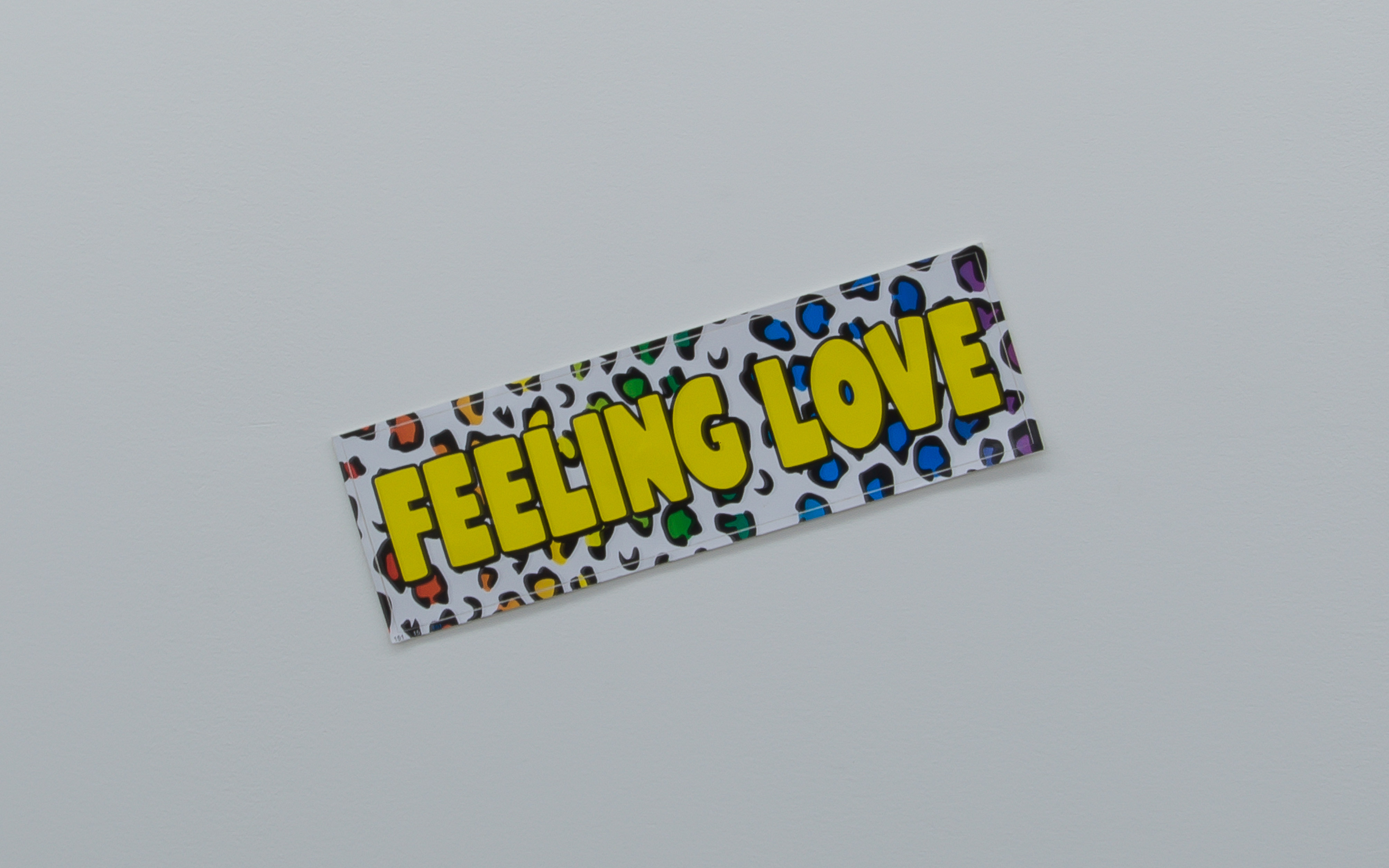
Audrey Schmidt is a writer and Melbourne Personality.


